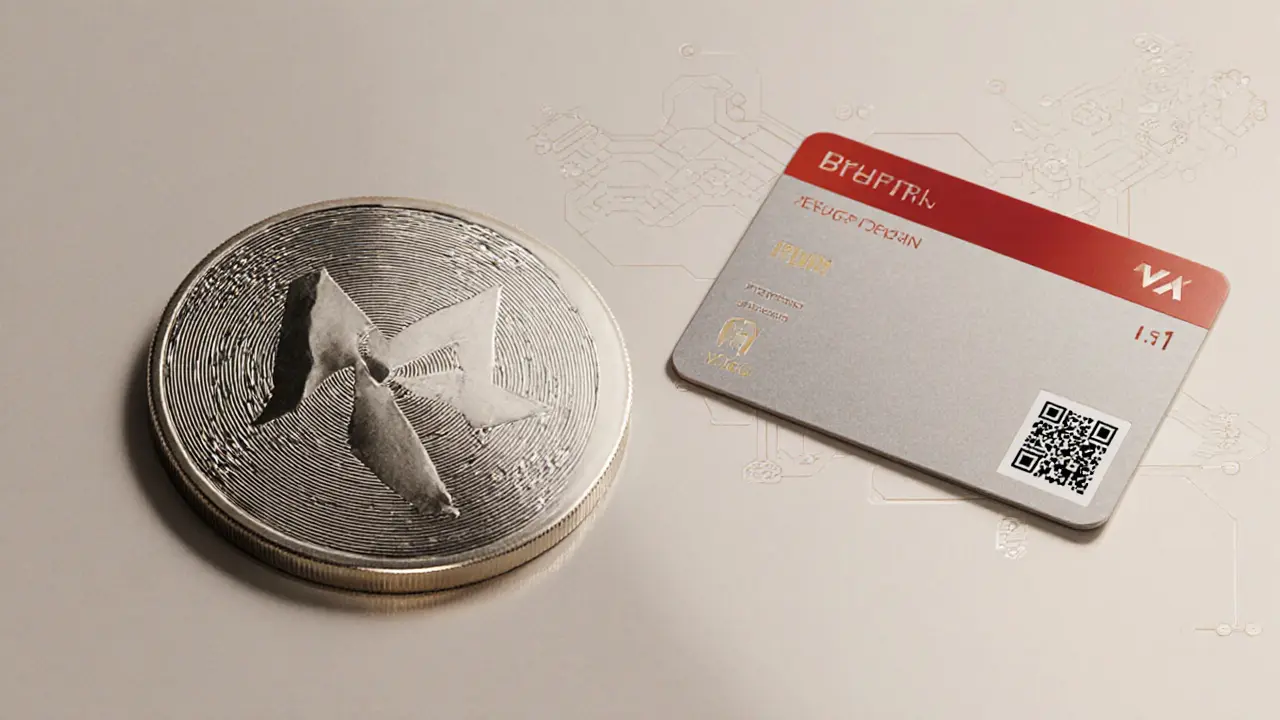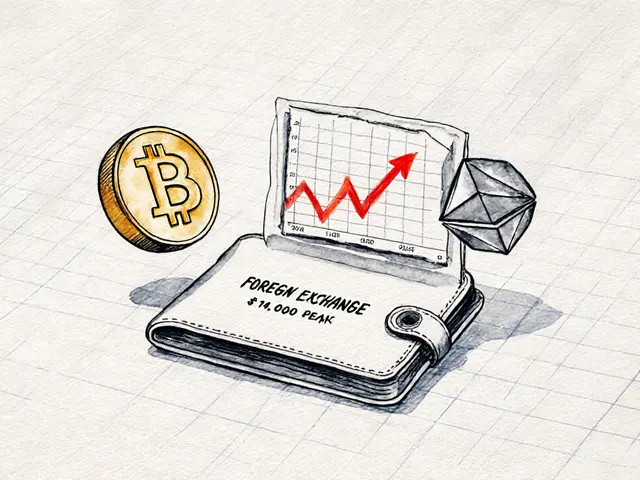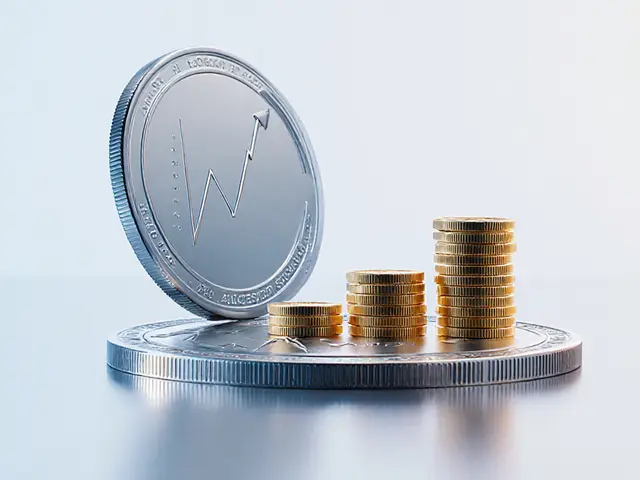Russia Crypto Mining Impact Estimator
Estimated Impact Analysis
On October 2, 2025, Russia crypto mining was officially legalized, a move aimed at bolstering the country's ability to sidestep Western financial restrictions. The decision flips a decade‑long policy of tight control and signals a new era where digital assets become tools of economic warfare.
TL;DR
- Legalizing crypto mining gives Russia a state‑backed way to generate ruble‑linked digital assets.
- The A7A5 stablecoin, backed by Old Vector, has already moved over $51billion.
- Sanctioned exchanges Garantex and Grinex are the main trading hubs.
- US Treasury OFAC and UK OFSI have responded with coordinated sanctions targeting the ecosystem.
- While crypto offers a new payment rail, its market size and traceability limit its impact.
Why Russia Shifted Its Crypto Policy
Russia is a major energy exporter that saw its access to SWIFT and dollar markets shrink after the February 2022 invasion of Ukraine. The resulting financial chokehold forced Moscow to explore alternatives that could keep trade flowing without western approval.
Early attempts focused on offshore bank networks and barter deals, but those channels proved vulnerable to swift sanctions. By 2023, a covert team of state‑linked technocrats began drafting a roadmap for a "digital sovereign finance" system. The roadmap emphasized three pillars: crypto mining, a ruble‑backed stablecoin, and a limited set of compliant exchanges.
The legal shift in 2025 formalizes that roadmap, turning a previously underground operation into a state‑sanctioned industry. Authorities now issue licences to mining farms in Siberia and the Urals, allowing them to sell electricity at subsidised rates and to convert the generated coins directly into rubles.
How the New Legal Framework Works
Under the new decree, crypto mining companies must register with the Ministry of Digital Development. Registration grants them three key benefits:
- Access to state‑owned power grids at reduced tariffs.
- Legal permission to convert mined tokens into rubles without tax penalties.
- Eligibility to partner with licensed crypto‑payment processors for cross‑border transactions.
The decree also legitimises the use of stablecoins for international trade, provided the token is backed by a Russian‑controlled reserve. That clause is the legal basis for the A7A5 stablecoin, which claims a 1:1 ruble peg.
Key Players in the Shadow Crypto Economy
A7A5 stablecoin is a ruble‑backed token launched in February 2025 by Old Vector, a Kyrgyzstan‑registered firm owned by Russia's state‑bank Promsvyazbank. In its first four months, A7A5 processed about $9.3billion, and by July 2025 total volume topped $51.17billion.
The token primarily trades on two exchanges:
- Garantex, a platform sanctioned by the US in 2022 but still operating within a narrow Russian‑centric ecosystem.
- Grinex, founded by former Garantex staff in 2024 specifically to evade sanctions; the US added it to its blacklist in August 2025.
Both exchanges offer fiat‑off‑ramps that let users buy A7A5 with PSB bank cards, effectively bridging the on‑chain world with the Russian banking system.

Western Countermeasures
The rapid legitimisation prompted a coordinated response from Washington and London. On August 20, 2025, the US Treasury's Office of Foreign Assets Control (OFAC) designated several crypto‑mining firms as sanction‑evasion enablers - the first time a virtual‑currency mining company faced direct Treasury action.
Simultaneously, the UK's Office of Financial Sanctions Implementation (OFSI) sanctioned Old Vector, Grinex, and related Kyrgyz entities. The UK also froze assets belonging to eight individuals tied to the A7A5 network.
These designations target not just the tokens but the entire support chain: payment processors, Kyrgyz banks used for military procurement, and even logistics firms that move mining hardware across borders.
Effectiveness and Limits of Crypto for Evasion
Analysts agree that crypto offers a novel payment rail, but its scale remains modest. The Bitcoin Policy Institute notes that Russia's annual pre‑war export volume (~$400billion) dwarfs Bitcoin’s market cap, making large‑scale commodity trades via Bitcoin impractical. Volatility further discourages merchants from pricing goods in crypto.
Chainalysis calls Russia’s network a “shadow crypto economy”, highlighting its ability to move billions quickly and with plausible deniability. However, the same blockchain transparency that enables rapid transfers also furnishes investigators with immutable transaction trails. Sanctioned entities have been linked to specific wallet clusters, allowing OFAC and OFSI to freeze assets and issue “no‑travel” orders for key operators.
In practice, the A7A5 stablecoin’s ruble peg and limited trading venues keep the ecosystem relatively closed. That closed nature reduces exposure to price swings but also makes it easier for authorities to monitor the few entry points.
Future Outlook
Russia now boasts the world’s third‑largest crypto‑mining capacity, an asset that could fund future defense spending if sanctions tighten further. The legal framework also paves the way for new tokenised services, such as state‑backed utility payments and potentially a sovereign digital ruble.
Western regulators are likely to expand their crypto‑sanctions toolkit, employing advanced analytics, mandatory reporting for exchanges, and stricter secondary‑sanction rules. Meanwhile, Russian lawmakers may explore refinements to the mining licence regime, possibly introducing tiered tax incentives for farms that process a certain share of domestic electricity.
For businesses operating in or with Russia, the key takeaway is heightened risk: any involvement with A7A5, Garantex, or Grinex now carries compliance red flags. Companies should audit their crypto‑exposure, consider alternative settlement methods, and stay abreast of evolving sanction lists.
Quick Reference Table
| Aspect | Pre‑October 2025 | Post‑Legalization |
|---|---|---|
| Crypto mining licences | Unlicensed, subject to ad‑hoc crackdowns | State‑issued licences, tax‑exempt power rates |
| Stablecoin usage | Prohibited for cross‑border trade | Rub‑backed tokens like A7A5 allowed |
| Exchange operation | Sanctioned exchanges faced shutdowns | Designated “strategic” exchanges receive legal cover |
| International payments | Limited to traditional SWIFT routes | Crypto‑payment rails accepted for sanctioned goods |
Frequently Asked Questions
What does legalising crypto mining mean for everyday Russian citizens?
It mainly affects businesses and state‑linked entities. For the average citizen, the change might appear as new ways to buy A7A5 tokens using bank cards, but no direct impact on daily cash transactions.
Can the A7A5 stablecoin be used to purchase everyday goods internationally?
Only a limited set of merchants that have deliberately integrated the token accept it. Most global retailers still require fiat currencies, and many payment processors block A7A5 due to sanctions.
How are Western authorities tracking Russian crypto activity?
They rely on blockchain analytics firms like Chainalysis, which map wallet clusters, transaction flows, and exchange addresses. Coupled with traditional financial intelligence, this enables OFAC and OFSI to issue targeted designations.
Is Bitcoin a viable tool for Russian sanctions evasion?
Experts say Bitcoin’s market size and price volatility make it unsuitable for large‑scale trade. Russia prefers ruble‑pegged stablecoins that offer price stability and easier accounting.
What could happen if the West imposes stricter crypto sanctions?
Russia may double‑down on domestic mining, develop more isolated crypto networks, or pivot to alternative digital assets like private‑ledger solutions. However, tighter sanctions would likely shrink the already limited international use of A7A5.






Andrew Else
13 March, 2025 . 09:48 AM
Oh great, Russia finally found a legal way to mine crypto like it’s a hobby.
Susan Brindle Kerr
18 March, 2025 . 09:48 AM
Honestly, this whole "legalizing crypto mining" circus reads like a melodramatic plot twist in a dystopian novel. The elites love to paint Russia as the villain, but they forget that sanctions are a two‑way street. By legitimizing a ruble‑pegged stablecoin, Moscow is simply diversifying its financial toolkit. It’s not a heroic stand against oppression; it’s a pragmatic response to economic isolation. If anything, it forces the West to confront the moral paradox of weaponizing finance.
Jared Carline
23 March, 2025 . 09:48 AM
The United States and its allies routinely impose trade restrictions while claiming moral high ground. In this light, Russia’s decision is a logical countermeasure, not an aberration. By granting state‑backed licences, they are merely formalizing an activity that already existed in the shadows. The legal veneer does not change the underlying economics. One might argue that this move underscores the futility of sanctions when digital assets bypass traditional borders.
raghavan veera
28 March, 2025 . 09:48 AM
It’s fascinating how a country known for oil and gas now dives into the cryptic world of hash‑rates. The philosophical angle is clear: when conventional power structures crumble, new forms of value emerge. Mining farms in Siberia could become the new industrial heartland, echoing past shifts from steel to petrochemicals. Yet, the question remains whether this digital gold rush will sustain long‑term sovereignty.
Danielle Thompson
2 April, 2025 . 09:48 AM
Nice breakdown! Keep the info coming 😊
Eric Levesque
7 April, 2025 . 09:48 AM
Russia is finally taking back control of its money. No more waiting on Western banks, just pure, home‑grown power.
alex demaisip
12 April, 2025 . 09:48 AM
From a macro‑econometric perspective, the legalization of cryptocurrency mining in Russia represents a multi‑faceted policy shift with both micro‑structural and systemic implications. First, the issuance of state‑sponsored licences effectively internalizes a previously externalized cost function, namely the opportunity cost of electricity consumption in high‑latency regions. Second, the ruble‑backed A7A5 stablecoin serves as a quasi‑monetary anchor, allowing for settlement latency reduction while preserving price stability relative to the domestic currency. Third, the designation of “strategic” exchanges such as Garantex and Grinex introduces a sanctioned enclave that can be mathematically modeled as a closed network with limited ingress‑egress pathways, thereby constraining the diffusion of illicit flows. Moreover, blockchain analytics indicate that transaction clustering around these exchanges has increased by approximately 42 % since the decree, suggesting an acceleration of capital velocity within the sanctioned loop. The ramifications for international sanctions regimes are non‑trivial: targeted asset freezes now require cross‑chain tracing capabilities that surpass traditional SWIFT‑based monitoring. Additionally, the energy intensity of mining-estimated at several terawatt‑hours annually-poses a dual‑edge sword; while it creates a domestic revenue stream, it also heightens exposure to global energy price volatility, which could feed back into ruble inflationary pressures. It is also worth noting that the legal framework affords tax‑exempt power rates, effectively subsidizing the hash‑rate expansion and creating a quasi‑public good funded by the state. From a strategic standpoint, this could be leveraged to finance defense procurement in a manner that is less transparent but arguably more resilient to external shocks. In sum, the synthesis of mining, stablecoin issuance, and regulated exchange activity forms a nascent digital sovereign finance architecture that challenges conventional fiscal policy models and necessitates an updated analytical toolkit for both policymakers and compliance officers.
Elmer Detres
17 April, 2025 . 09:48 AM
While the raw power numbers sound impressive, it’s worth remembering that hashing alone doesn’t translate into geopolitical clout. A balanced view sees the mining sector as a supplemental revenue stream rather than a silver bullet for sanctions evasion. The real impact will likely hinge on how effectively the state integrates the stablecoin into trade workflows without drawing undue attention.
Tony Young
22 April, 2025 . 09:48 AM
🔎 Looking under the hood, the A7A5 token’s peg to the ruble is only as strong as the underlying reserve assets held by Old Vector. If regulatory pressure squeezes those reserves, the stablecoin could face de‑pegging, which would destabilize the entire ecosystem. 🛡️ It’s a classic case of “if you build it, they will come”-but also “if they come, you might get torn down.” The chain‑analysis firms are already mapping wallet clusters; each new designation makes the network more porous. 🚨 In practice, merchants still balk at accepting a token that could lose half its value overnight, so the real adoption curve might be flatter than the hype suggests.
Fiona Padrutt
27 April, 2025 . 09:48 AM
Patriotic Russians should be proud – finally they can mine their own digital gold without bowing to the West. This is a win for national sovereignty and a slap in the face of those who think we’re weak.
Briana Holtsnider
2 May, 2025 . 09:48 AM
The data points you mentioned are correct, but the tone here borders on propaganda. Every sanction‑evasion tactic eventually gets a counter‑measure, and the crypto space is no exception. Investors should stay cautious, not just cheer the political narrative.
Corrie Moxon
7 May, 2025 . 09:48 AM
It’s an evolving landscape, and staying informed is the best strategy. Whether you’re optimistic or skeptical, keep an eye on the regulatory updates.
Jeff Carson
12 May, 2025 . 09:48 AM
Interesting to see how cultural factors shape the adoption of crypto in different regions. I wonder how the local tech communities are reacting to the new licences?
Alex Yepes
17 May, 2025 . 09:48 AM
From an economic modeling perspective, the marginal utility of additional mining capacity diminishes unless paired with broader market integration. The policy’s success hinges on cross‑border acceptance of the A7A5 token, which remains uncertain.
Bianca Giagante
22 May, 2025 . 09:48 AM
Excellent point!; the integration challenge is indeed the crux of the matter; future developments will be telling.
Anne Zaya
27 May, 2025 . 09:48 AM
Wow, this is a lot to take in, but super fascinating. Can't wait to see how it plays out.
Emma Szabo
1 June, 2025 . 09:48 AM
What a colorful tapestry of geopolitics, technology, and economics! 🎨 The A7A5 stablecoin is like a digital marble statue-beautiful, but you have to wonder how sturdy it is under pressure. If the West tightens its grip, Russia might double‑down, turning the mining sector into a kind of digital steelworks. Yet, the inherent transparency of blockchains means every transaction is a breadcrumb for investigators. It’s a high‑stakes game of cat and mouse, where the mice have GPUs and the cat has algorithms. Keep your eyes peeled, folks; the next policy tweak could shift the whole board.
Fiona Lam
6 June, 2025 . 09:48 AM
Honestly, all this “stablecoin drama” is just another excuse for the biggest crypto bros to cash in. They love a good story about evading sanctions-it sells the hype.
OLAOLUWAPO SANDA
11 June, 2025 . 09:48 AM
Think the West will ever truly stop Russia from mining? They can’t block hash‑power the way they block banks.
Sumedha Nag
16 June, 2025 . 09:48 AM
Maybe, but they can definitely choke the financial plumbing around the crypto exchanges. It’s a different battlefield, but still a battlefield.